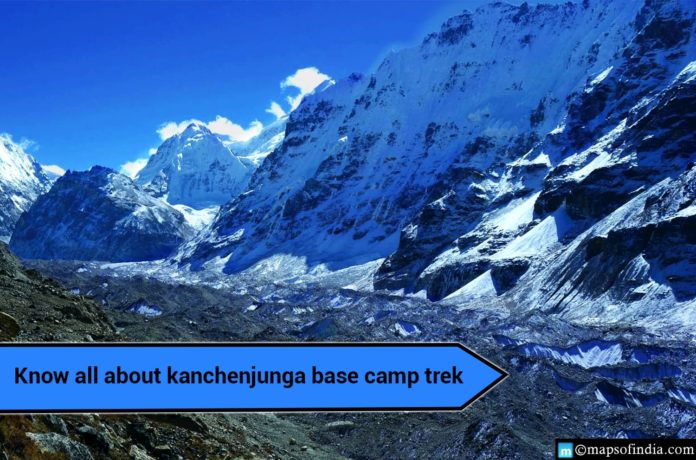Kanchenjunga’s towering summit is so high that a climb to its base camp is an adrenaline-pumping experience by itself. Compared to other treks in the Indian Himalayan range, the walk to Kanchenjunga Base Camp is unique. The Kanchenjunga Mountain forms a large cross that crosses the borders of three major countries: Tibet, India, and Nepal. Kangchenjunga was considered India’s tallest mountain until 1849, before the discovery of Everest and K2.
According to geographical data, Kangchenjunga, together with its five big mountains, is the world’s third tallest mountain. These five Himalayan massifs in the Sikkim area began to see high traffic in 1988. Previously, trekking in the region was banned to protect the area’s ecosystem. Gradually, the explorers revealed the secluded valleys and hidden gems – lakes, tribal communities, and forests teeming with plants and animals.
The adventurous journey to Kanchenjunga base camp begins in Yuksom and goes through Bakhim, Dzongri, Laxmi Pokhari, Bikhbari Chaurikhang, Rathong Glacier, Bikhbari, and finally Bakkhim. In addition, Trekkers will be able to see Mt Khangchendzonga (8,586 m), Mt Kokthang (6,148 m), Mt Pandim (6,691 m), and numerous more peaks in the region throughout the adventure.
Kanchenjunga Boot Camp Trek is ideal for trekkers because of its isolated towns, high verdant, sparkling mountains clothed in snow, foggy clouds forming a canopy surrounding magnolia, and rhododendron forests, and stunning scenery. So grab your tickets for this fascinating journey right now.
Trekkers must avoid trekking during the monsoon season since the paths become slick and roads become impassable due to excessive rainfall. Likewise, trekking is typically impossible during the winter season since it snows a lot, making tracks impassable and unpleasant weather. Trekking necessitates travelling long distances, generally by going up and down hills and mountains. Beyond Dzongri, the air becomes lighter and has less oxygen, necessitating extensive adaptation. Therefore, trekkers must be physically fit.
The journey starts at Taplejung, which is reached after a 45-minute flight from Kathmandu to Bhadrapur, continued by a vehicle ride to Birtamod and finally to Taplejung. This tour of Mount Kanchenjunga includes stops at both the North and South Base Camps. The path begins by approaching Kanchenjunga’s north side, where you will enjoy the beautiful scenery of Tent Peak, Nepal Peak, and Cross Peak before the majority of Kanchenjunga becomes visible.
The journey returns to Ghunsa from Pangpema on the north side and then traverses Mirgin La pass towards the southern side of Kanchenjunga. After crossing this mountain, the trail continues via Ramche and Oktang, with spectacular views of Kanchenjunga’s South West face.
The Kanchenjunga trek is lengthy (220 km) and hard, necessitating a high fitness level for three weeks of continuous trekking with a light rucksack. The environment is frequently challenging, with rocky trails and some long slopes, and there are a few locations around the base camps where small ropes may be required to facilitate movement through rocky terrain. These are for safety and to help travellers over brief rough spots. The journey, however, does not need any climbing expertise.





